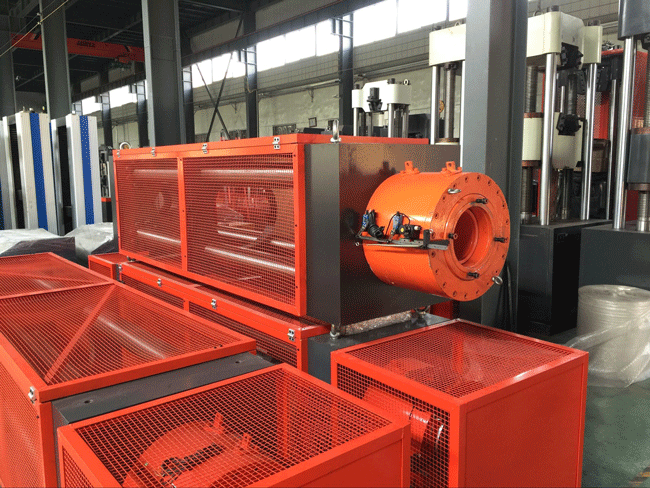Two or three things about the anchoring testing machine

Speaking ofStatic load anchoring testing machine, In recent years, I believe everyone is no longer unfamiliar with it, especially with the further development of the economy, the construction of infrastructure, the gradual increase of roads and bridges, and the further clarification of the quality requirements for the cable-stayed structure of bridges. Therefore, the use of anchor testing machines has also greatly increased. However, many people may know about anchor testing machines but not their reasons
Now, let's discuss some basic knowledge of anchoring testing machines with everyone.
Anchor testing machines are currently commonly available in two specifications: 500 ton and 650 ton. Static load anchor testing machines are specialized testing equipment used for factory inspection and type testing of prestressed anchor manufacturers, on-site acceptance of large engineering units, and inspection of prestressed anchor assemblies by product quality supervision departments. Therefore, the position of anchor testing machines is also crucial.
The static load anchoring testing machine is mainly composed of a high-precision servo pump to control the oil source and microcomputer measurement and control technology, forming a fully automatic closed-loop speed control system, which can accurately control and measure the entire testing process. This testing machine is based on GB/T2611-1992 The anchor components of the static load anchoring testing machine are tested according to the standard GB/T14370-2007"Anchors, fixtures, and connectors for prestressed tendons" under servo control conditions.
2. It has two control channels for load and displacement, as well as three corresponding control modes for force, stress, and displacement. The control modes can be randomly/arbitrarily switched between them. PID parameters can be adjusted online.
3. It can perform equal rate load, stress, displacement control and constant load, stress, displacement control, and adopt stepless speed regulation.
4. Automatically draw various test curves such as force displacement, force time, displacement time, etc., automatically edit test reports and print them out in a timely manner;
5. The measurement system has automatic zeroing and calibration functions, and continuous measurement throughout the entire process without grading.
6. Group style multi-color curve comparison tests can be conducted, and any segment on the test curve can be selected for regional amplification analysis. During the test process, various test curves can be switched and displayed;
7. Input of original experimental parameters
8. It has a powerful database and multiple interface formats for users to choose from, helping them achieve local area network communication;
9. It has multiple protective measures such as pressure, oil temperature, and piston limit




